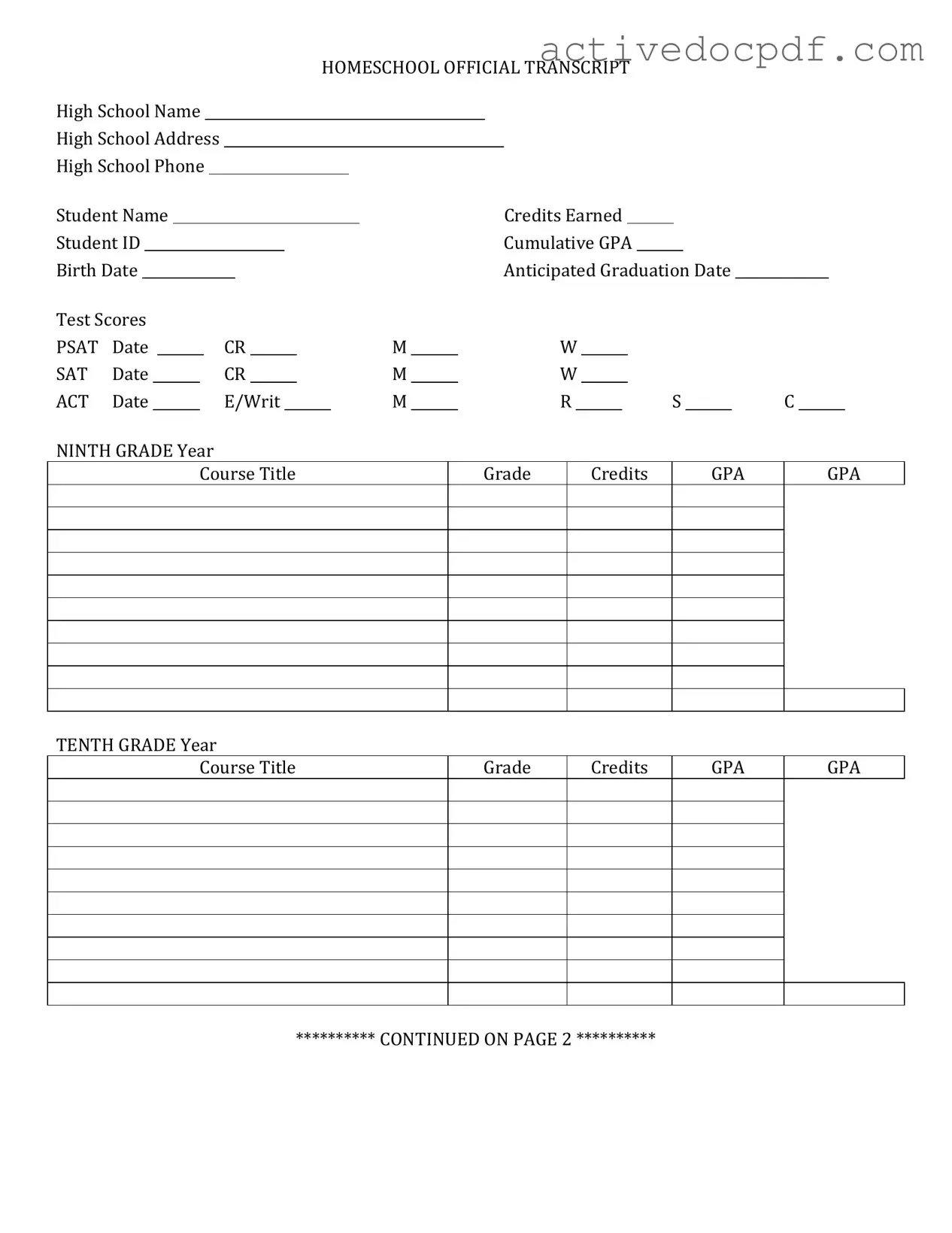What is a High School Transcript?
A high school transcript is an official record of a student's academic achievements during their time in high school. It includes details such as the courses taken, grades received, and credits earned. This document is often required for college applications, job applications, and other situations where proof of education is necessary.
How do I request my High School Transcript?
To request your high school transcript, follow these steps:
-
Contact your high school's registrar or guidance office.
-
Complete any required forms for transcript requests.
-
Provide identification, if necessary, to verify your identity.
-
Pay any applicable fees, if required.
-
Specify where you want the transcript sent, such as to a college or employer.
How long does it take to receive my transcript?
The processing time for a high school transcript can vary. Generally, it may take anywhere from a few days to a couple of weeks. Factors that influence this time include the school's policies, the time of year (e.g., busy graduation season), and whether the request is made in person or online.
Can I get a copy of my transcript if I graduated years ago?
Yes, you can obtain a copy of your transcript even if you graduated years ago. Most high schools maintain records for many years. Contact your high school’s registrar office to inquire about the process for obtaining your transcript. Be prepared to provide information such as your full name at the time of graduation, date of birth, and graduation year.
What if I find an error on my transcript?
If you notice an error on your transcript, it’s important to address it promptly. Here’s what you can do:
-
Contact your high school’s registrar or guidance office immediately.
-
Provide evidence of the error, such as report cards or other documentation.
-
Request a correction in writing, if necessary.
Schools typically have a process in place for handling transcript errors, so don’t hesitate to reach out for assistance.
